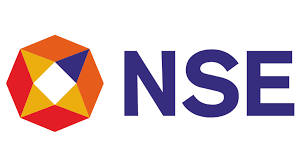PNB Finance Unlisted Shares

PNB Finance and Industries Ltd.
INE057F01011
Listing Status: Delisted
Listed at CSE

About PNB Finance Unlisted Shares
Overview of PNB Finance Unlisted Shares
PNB Finance and Industries Ltd. (PNBFIL) is a financial services company based in India. Established in 1989, it primarily focuses on providing financial solutions including loans, investments, and other related services. This report provides a detailed overview of PNBFIL’s business operations, financial performance, and future prospects.
Business Model & Operation:
PNBFIL operates in various segments including:
- Corporate Finance: Provides financing solutions to businesses for expansion, working capital, and other needs.
- Investment Services: Offers investment products and advisory services to individuals and institutions.
- Loan Products: Includes personal loans, home loans, and auto loans.
- Asset Management: Manages investment portfolios for clients, focusing on maximizing returns.
Subsidaries:
Name: Esoterica Services Ltd. (Earlier Jacaranda Corporate Services Ltd.)
Industry Focus: Corporate advisory, management consulting, and financial services.
PAT: 175.01
Name: Punjab Mercantile and Traders Ltd.
Industry Focus: Corporate advisory, management consulting, and financial services.
Industry Focus: Trading and mercantile services.
PAT: 4.41
Outlook,
Risks, and Concerns
- Outlook:
- Risks:
1) Focus on investment in high-quality securities and large-cap companies for long-term capital appreciation.
2) Mitigating risks through prudent investment strategies.
1) Exposure to interest rate fluctuations, market risks, and operational risks.
Insights of PNB Finance Unlisted Shares
|
Particulars |
FY24 |
FY23 |
|
Revenue |
9.39 |
10.65 |
|
EBITDA |
6.49 |
7.16 |
|
PAT |
5.42 |
6.03 |
|
PAT Margin |
57.7% |
56.6% |
|
EPS |
16.95 |
18.85 |
Key Takeaways:
· The company has seen a decrease in revenue, EBITDA, and PAT.
· The PAT margin has improved, signaling better profitability management.
· EPS has declined, aligning with the overall reduction in net profit.
Results of Operations
- Net Profit: ₹542.26 lakhs for FY 2023-24.
- Major Income Sources: Dividends from equity instruments and interest income from bonds, NCDs, and deposits.
Industry Overview:
Indian Economic Performance (FY 2023-24):
- Growth Rate: Impressive 7.8%, exceeding the G20 average of 3.4%.
- Key Drivers: Strong investment activity, robust manufacturing and services sectors, despite slowed agricultural activity.
- Fiscal Deficit: Increased to 5.8% with a combined debt-GDP ratio above pre-pandemic levels.
- Stock Market Performance: Nifty 50 index delivered a 29% return, marking the eighth consecutive year of positive returns.
- Bank and NBFC Sector: Healthy capital and asset quality, with pre-emptive regulatory measures to ensure financial stability.
SWOT Analysis:
Strengths
1. Strong Financial Backing: Being part of the Punjab National Bank group provides PNB Finance and Industries Ltd. (PNBFIL) with robust financial support and credibility.
2. Diverse Investment Portfolio: PNBFIL has a diversified portfolio including investments in mutual funds, bonds, equity shares, and fixed deposits, which helps in risk management and income stability.
3. Established Market Presence: The company’s long-standing presence in the financial services sector enhances its brand reputation and reliability.
4. Regulatory Compliance: Adherence to RBI regulations and classification as an NBFC-BL (Base Layer) reflects a strong compliance framework.
5. Stable Revenue Streams: Consistent income from investments provides a stable revenue base and reduces dependence on a single income source.
Weaknesses
1. Limited Public Deposit Base: As an NBFC without public deposits, PNBFIL may face limitations in accessing a broad range of funding sources compared to other financial institutions.
2. Dependency on Investment Income: The company relies heavily on income from investments, which can be affected by market volatility and economic conditions.
3. Regulatory Uncertainty: Ongoing regulatory changes and the process of obtaining a Type-I certificate could introduce uncertainties and operational constraints.
4. Lack of Customer Interface: Limited customer interaction may affect the company’s ability to diversify its service offerings or capture new market opportunities.
5. Operational Scope: With a focus primarily on investment activities, the company's operational scope might be narrower compared to diversified financial services firms.
Opportunities
1. Economic Growth: The growing Indian economy and favorable investment climate present opportunities for increased returns on investments and expansion of the investment portfolio.
2. Regulatory Changes: Regulatory changes and the potential acquisition of a Type-I certificate could enhance operational flexibility and access to new markets.
3. Technological Advancements: Investing in digital platforms and financial technology can improve operational efficiency and customer engagement.
4. Diversification: Expanding into new financial products or geographic markets could offer additional revenue streams and reduce risk exposure.
5. Strong Market Performance: Positive trends in financial markets, such as rising stock indices and healthy corporate balance sheets, can benefit investment returns.
Threats
1. Market Volatility: Fluctuations in financial markets and economic instability can impact investment returns and overall financial performance.
2. Regulatory Risks: Changes in regulatory requirements or delays in obtaining necessary certifications could pose operational and compliance challenges.
3. Economic Downturns: Economic slowdowns or downturns can negatively affect investment performance and profitability.
4. Competitive Pressure: Intense competition from other financial institutions and NBFCs may affect market share and profitability.
Financial Charts of PNB Finance Unlisted Shares
Balance Sheet of PNB Finance Unlisted Shares
Profit and Loss of PNB Finance Unlisted Shares
Ancillary of PNB Finance Unlisted Shares
Ratio Analysis
Peers
Industry Benchmarking
Segment Revenue
Subsidaries
Security Allotment
Corporate Governance
Team Management Details
FAQs of PNB Finance Unlisted Shares
-
How to buy PNB Finance and Industries Ltd.?
Below are three ways through which you can purchase PNB Finance and Industries Ltd.:
- We at Altius Investech have many actively traded scripts and are market makers of unlisted shares. To check out all the unlisted shares traded. (Click on link). To submit a request to buy PNB Finance and Industries Ltd., please click on the trade button at the top of this page
- Additionally, you can download our app from your play store or app store, register on our application, and engage in active trading there.
Download the Altius App here https://onelink.to/hf4m72 - You can also reach out to us at : +91 8240614850 / +91 8240861716
-
How to sell PNB Finance and Industries Ltd.?
Below are three ways through which you can sell PNB Finance and Industries Ltd.:
- We at Altius Investech have many actively traded scripts and are market makers of unlisted shares. To check out all the unlisted shares traded. (Click on link). To submit a request to sell PNB Finance and Industries Ltd., please click on the trade button at the top of this page
- Additionally, you can download our app from your play store or app store, register on our application, and engage in active trading there.
Download the Altius App here https://onelink.to/hf4m72 - You can also reach out to us at : +91 8240614850 / +91 8240861716
-
What is the price of PNB Finance and Industries Ltd.?
We provide a two way quote on all the shares we deal in. Your buy price for PNB Finance and Industries Ltd. is ₹12999 and your sell price for PNB Finance and Industries Ltd. is ₹8000. The price is based on our estimates and market conditions.
-
What is the lock-in period of PNB Finance and Industries Ltd.?
The lock-in period for PNB Finance and Industries Ltd. varies depending on the category of investors:
- For retail Investors, HNIs, or Body Corporates, the lock-in period is 6 months from the date of the listing of PNB Finance and Industries Ltd.
- For Venture Capital Funds or Foreign Venture Capital Investors, there is a lock-in period of 6 months from the date of acquisition of PNB Finance and Industries Ltd.
- For AIF-II (Alternative Investment Funds - Category II), there is no lock-in period
August 2021 saw the introduction of this regulation by SEBI. The purpose of the regulation change, which lowered the lock-in period from a year to six months, was to incentivize additional investments in firms getting ready for initial public offerings, or IPOs. Since its introduction, a number of Portfolio Management Services (PMS) have advised their clients to purchase Pre-IPO shares in order to take advantage of the advantages associated with early-stage investments. This reduction in the lock-in period is considered as a significant step forward.
-
How is the PNB Finance and Industries Ltd. price calculated?
Fundamental & Comparative valuation models and the forces of demand and supply in the market for unlisted shares dictate the price. These prices are based on our estimates and transaction history of PNB Finance and Industries Ltd.. The price is also determined from the most recent funding round for PNB Finance and Industries Ltd.. This provides us with a benchmark valuation, offering a clear indication of the company's current market value as perceived by investors and industry experts.
-
What are the lot sizes of PNB Finance and Industries Ltd.?
We can generally arrange lot sizes starting with an investment of INR 20,000. To confirm the lot sizes of PNB Finance and Industries Ltd. with us kindly click here.
-
What are the financials of PNB Finance and Industries Ltd.?
The financials of PNB Finance and Industries Ltd. which includes the P/L of PNB Finance and Industries Ltd. and the Balance Sheet of PNB Finance and Industries Ltd. is in the financials section (Click on link).
-
Where can I find the annual report of PNB Finance and Industries Ltd.?
The annual report of PNB Finance and Industries Ltd. is available in the annual report section (Click on link).
-
Is buying PNB Finance and Industries Ltd. legal in India?
Yes, buying and selling unlisted shares in India is indeed 100% legal. This activity is regulated and governed under the guidelines provided by the Securities and Exchange Board of India (SEBI). Investors and traders must adhere to these regulations and guidelines to ensure compliance with legal and financial standards. It's important for participants in the unlisted share market to be aware of and understand these regulations to engage in transactions legally and securely.
-
Short-term Capital Gain taxes to be paid on PNB Finance and Industries Ltd.?
When you sell unlisted shares within a period of two years from the date of acquisition, any profit earned from the sale is classified as Short-term Capital Gain (STCG). This gain is then added to your total income for that financial year. The tax on this short-term capital gain is calculated based on your applicable individual income tax slab rates. Therefore, the rate at which you will pay tax on the STCG from unlisted shares depends on your total income, including this gain, and the tax slab it falls under as per the prevailing income tax laws in India. It's important for investors to consider these tax implications when engaging in transactions involving unlisted shares.
-
Long-term Capital Gain taxes to be paid on PNB Finance and Industries Ltd. and how are They Taxed?
Long-term Capital Gains (LTCG) on unlisted shares in India refer to the profits earned from the sale of unlisted shares that have been held for more than two years. The key aspects of LTCG on unlisted shares include:
- Tax Rate: LTCG on unlisted shares is taxed at a rate of 20%.
- Indexation Benefit: This is a significant advantage for investors. Indexation allows for adjusting the purchase price of the shares for inflation, which can reduce the taxable gain.
- Importance for Investors: Understanding LTCG is crucial, especially for High Net-worth Individuals (HNIs) and retail investors, as it impacts their investment strategy and tax planning. Knowing these details helps in making informed investment decisions.
- Calculation: LTCG is calculated by subtracting the indexed cost of acquisition (the purchase price adjusted for inflation) from the sale price of the shares. The profit thus calculated is subject to a 20% tax.
- Applicability: LTCG tax is applicable to profits from the sale of unlisted shares held for more than two years.
- Relevance: This tax is particularly relevant to investors in the unlisted share market, including those considering selling their holdings after a period of more than two years.
-
Applicability of Taxes on PNB Finance and Industries Ltd. once it is listed?
When shares initially bought in the unlisted market become listed, the taxation rules change significantly if these shares are sold through a stock exchange. Here's what investors need to know:
Transition to Listed Market Tax Rates: Once unlisted shares are listed on the stock exchange and subsequently sold, the tax rates applicable to listed securities come into effect. This shift means that the favourable tax treatments for listed shares, as per the prevailing tax laws, will apply.
Taxation Based on Holding Period: The crucial factor in determining the type of capital gains tax (Long-term or Short-term) is the holding period of the shares. Importantly, this period is calculated from the original purchase date when the shares were unlisted.
Long-term vs. Short-term Capital Gains: If the shares are sold after being held for more than one year from the date of purchase (including the period when they were unlisted), they are subject to Long-term Capital Gains (LTCG) tax.
Conversely, if sold within one-year, Short-term Capital Gains (STCG) tax rates apply.
Significance for Investors: This information is vital for investors in the unlisted market, as it impacts their tax planning and decision-making process. Understanding these nuances ensures that investors can strategically plan the sale of their shares post-listing to optimize tax implications.
Advice for Investors: It's advisable for investors to keep a record of their purchase dates and monitor the listing dates closely. Additionally, staying updated with the latest tax regulations or consulting with a financial advisor is recommended for accurate tax calculations and compliance. -
How does Altius Investech source PNB Finance and Industries Ltd.?
At Altius Investech, our approach to sourcing Boat Unlisted Share (Imagine Marketing) involves a strategic and direct method. Primarily, we acquire these shares from the below key groups:
Employees of the Company: Employee stock option plans (ESOPs) or other compensation packages frequently include shares for firm employees. For a various reasons, such as including portfolio diversification or financial considerations, some of these employees may eventually choose to sell their shares. We engage with these employees, providing them a platform to sell their shares.
Initial Investors: These are the angel or early-stage investors who provided capital to the business in its early stages. These original investors may look to sell all or part of their ownership position in the company as it develops and flourishes. This might be done for various reasons such as in order to maximise their investment, reallocate resources, or make other calculated financial decisions.
Funding rounds and VC funds: Altius Investech sources the shares from private placement rounds in which private companies seek to obtain capital from the market. Through our platform, venture capital funds can liquidate their shares and we receive the inventory from them when they decide to sell a portion of their ownership through block trades.
By establishing connections with these groups, Altius Investech guarantees our clients a steady and dependable supply of Boat Unlisted Share (Imagine Marketing). This process not only makes it easier for employees and initial investors in liquidating their assets, but it also gives our clients access to shares that aren't often found on the open market. Our platform effectively facilitates a win-win situation for both buyers and sellers. -
How to trust Altius Investech before buying PNB Finance and Industries Ltd. from its platform?
Altius Investech stands at being India's fastest growing and leading marketplace for buying and selling unlisted shares. We believe in enabling access to alternative sources of investments at lower entry barriers to private equity investments.
With more than 25 years of experience, Altius Investech has carved a niche in the financial market by serving more than 8000 clients. The incredible journey is further highlighted by the vast number of transactions that Altius Investech has facilitated transactions that have already exceeded 300 crores.
For investors Altius Investech curates investment opportunities in companies at reasonable valuations which are on the verge of an IPO leading to massive value unlocking. Investments are backed by thorough research and sound investment thesis, with a time bound exit plan.
For ESOP Shareholder and existing Investors, we assist them to liquidate their shares even if they are not publicly traded by creating a platform where we find the right buyers and sellers for the best prices.
Altius Investech have been featured in top media news outlets like Economic Times, Financial Express, Money control. Check out about us on these - leading publications (Click on link) Our journey over these years has not just been about numbers; it's been about building trust and reliability.
We at Altius Investech are dedicated to upholding the greatest levels of ethics and transparency, making sure that your investment experience is not only profitable but also safe and reliable.
Press of PNB Finance Unlisted Shares
Featured Blogs of PNB Finance Unlisted Shares
Annual Report of PNB Finance Unlisted Shares
Company Information of PNB Finance Unlisted Shares
Stay Connected.
Registered Address
73A, GC Avenue, Kolkata -13Corporate Address
Floor 5 , unit 501 Merlin Infinite DN-51, Street Number 11, DN Block, Sector V, Bidhannagar, Kolkata, West Bengal 700091Chennai Office
19/10, Guru Vappa Chetty Street, Chintadripet, Chennai - 600002
Dubai Office
2701, Executive Tower G, Business Bay, Dubai, UAE
Andhra Pradesh & Telangana Office
54-19-25/1, Flat no.101, Sai Residency, Nelson Mandela Park Road, LIC Colony, Vijayawada (Urban), Andhra Pradesh - 520008Altius Investech














